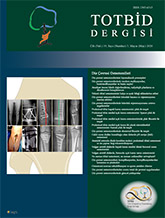
High tibial osteotomy (HTO) reduces pain by medial joint decompression by moving the mechanical axis laterally in the early period and slows the progression to arthrosis in young and active patients. Recently, the indications of this technique are not only limited to varus malalignment or early stage arthrosis, but also for chronic posterolateral instabilities and to support ligament reconstructions. Proximal tibia medial open wedge osteotomy (PTMOWO) is preferred HTO technique today because of its advantages over lateral closed wedge osteotomy. However, there are potential disadvantages of this technique such as requiring bone grafting, iatrogenic increase of posterior tibial slope, increased patellofemoral pressures in overcorrection and nonunion. Stable fixation is necessary to minimize risk of nonunion and correction loss after PTMOWO. Various implants have been produced to make it more stable. Spacer plates and locking plates are the most used fixation methods. The most important factor in the success of PTMOWO surgery is appropriate patient selection and appropriate surgical technique. For this reason, preoperative planning and implant selection should be done with care.